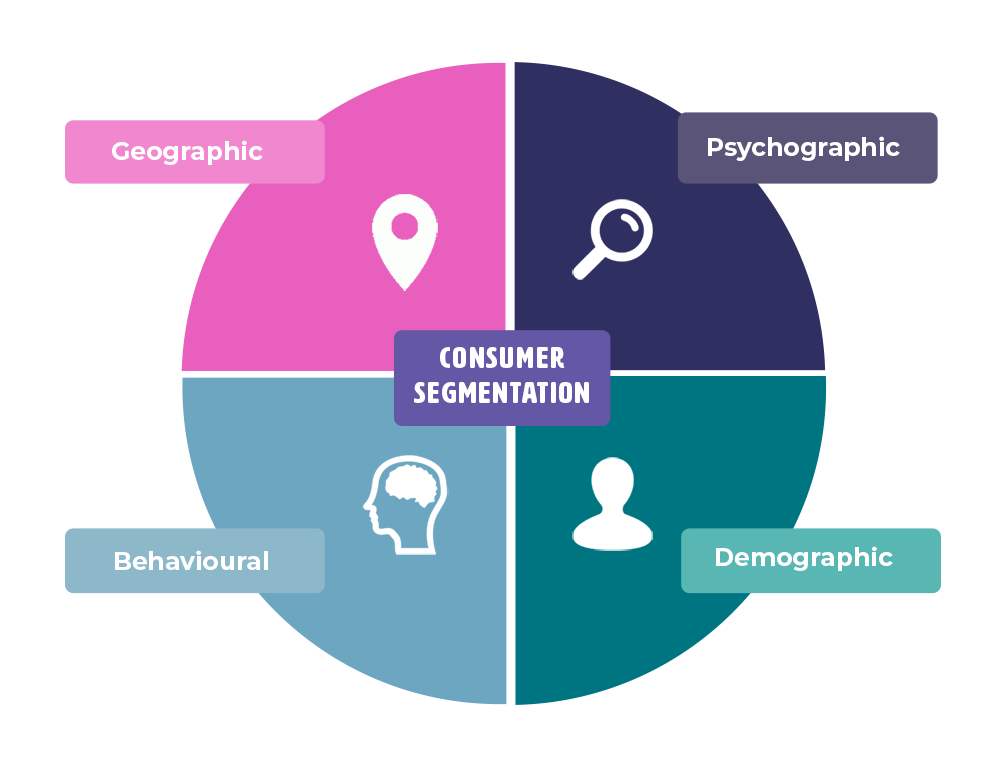

By Abby Rolfe, Digital Marketing Executive at Professional Academy
Published 1st October, 2020
Who is your product/service for? If your answer is ‘everyone!’, then you have some strategising to do. You might think keeping the range broad means you’ll sell more – but it actually implies that your product appeals to no-one in particular. Your marketing will also be more expensive, and it’s difficult to have a one-size-fits-all approach when it comes to messaging.
So, we need to make your audience more defined. Or if your product really does appeal to everyone, then you can segment it and tailor messages to each individual group. Tailored marketing means you can speak directly to specific sections of your audience with appealing personalised messages, imagery, and colours throughout your promotional materials.
This is where Segmentation, Targeting and Positioning (STP) comes in! Simply put, it’s an approach that helps you effectively communicate with the most valuable segments of your target market.
A segment is a section of your target market with common characteristics. Think of your entire audience base as a pie. A segment is just one slice of that pie. You can segment in multiple ways – but the main approaches are as follows:
Demographic: age, gender, income, education, social status, family, life stage, occupation
Geographic: country, city, language, climate, area, population, population density
Psychographic: lifestyle, interests, opinions, personality, values, attitudes
Behavioural: purchase, usage, buyer stage, engagement, benefits sought, actions taken, behaviour, e.g. do they prefer to purchase/browse online or in-store?

You can use all the above information to create buyer personas - these are fictional characters that reflect your market segments. They’re a way to bring your market segments to life. Don’t be afraid to get creative. Give them names, faces, and characteristics; and make sure you keep them in mind when you’re making those all-important marketing decisions.
Example
Let’s say you own an independent, eco-conscious business that sells high-quality products for babies and young children. It’s called Natures Hug Organics. You have a small shop in London along with an online store.
Your buyer persona is Jane, a young middle-class mum who works part-time in Central London and lives in the outer suburbs. She enjoys supporting small businesses, is environmentally conscious, and is willing to pay more for high-quality, eco-friendly products for her 2 small children. She prefers online shopping as it means she can juggle this around her busy family life.
Buyer personas aren’t all-encompassing, but they do help narrow down and understand your audiences better. This makes it easier to tailor your messaging. Personas based on actual data (e.g. do you know your customers’ predominant age range/gender?) from your business are the most effective, but you can also use educated assumptions where necessary.
Now that you are aware of your key segment(s), it’s time to identify the highest value contenders. Who has the greatest need for your product? What is their size and potential growth? What is their profitability? How do they compare to the other segments?
It’s often not possible to target every segment simultaneously, so you will have to make a judgement call based on the answers to the previous questions.
If we think about this in relation to our previous persona, Jane, then we could ask questions such as: how old are her children? i.e. how long is she likely to be a customer? We can then determine her worth as a segment based on the amount she is predicted to spend per year, per child.
When you’ve chosen your best segment, you can plan how to incorporate this into your marketing strategy. Think carefully about how you can best reach and impress this audience. A PESTELE analysis is useful here to determine any influences (e.g. social, technological, or environmental) that might have an impact on your segment.
This is where you analyse your value proposition against competitors and the needs of your target segment. With this information you can see where your brand can position itself alongside its competitors. It should ideally be somewhere with a gap in the market, or near competitors where you can offer a unique selling point (USP).
Next, identify how you want to position your product, based on the personality and behaviour of your chosen segment. You can use the marketing mix and the marketing communications mix to decide which will be the most effective form of marketing.
The final task is to create a marketing plan based on both STP and your value proposition. Now you should be in a strong position to come up with some creative new campaigns that will be sure to catch the attention of those key customers.
Example: Let’s revisit the persona a final time. Jane is very eco-conscious, so Natures Hug Organics would benefit from targeting Jane (and others in their environmentally friendly segment) by creating a campaign around their sustainable practices, materials, and their recycling procedures.
Step 1: Segment - divide your customers into segments based on common characteristics and needs
Step 2: Target - identify your most valuable types of customer
Step 3: Position - develop your offering to engage with these groups more effectively
Professional Academy's Strategic Marketing Theories Explained is a video series that explains marketing models in more detail.
Watch the recording for STP & the Customer Persona to see CIM tutor, Professional Academy trainer and all-round marketing pro Peter Sumpton go into more detail on each step of STP and how to develop a good persona.
In addition to this, the STP model and many other important marketing theories are taught in our CIM Marketing Courses. You will be supported by excellent and experienced tutors whilst receiving interactive learning materials to support your studies. Discover new ways to innovate in marketing and thrive in your career!
For more information on Professional Academy’s Marketing Qualifications please download a Prospectus today.
If you would like help referencing this blog, check out our Harvard Referencing Blog.

References/further reading:
https://mayecreate.com/blog/why-everyone-is-not-included-in-your-target-market